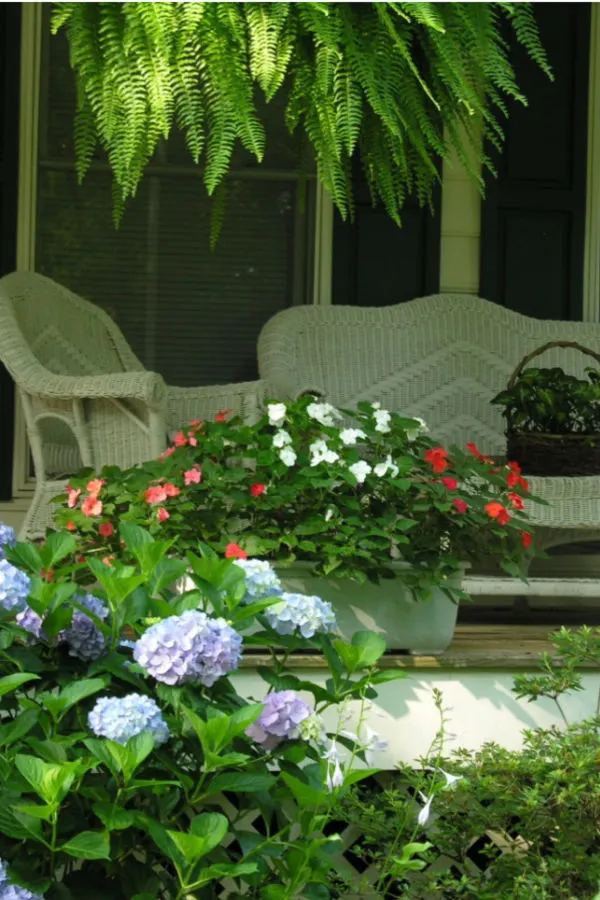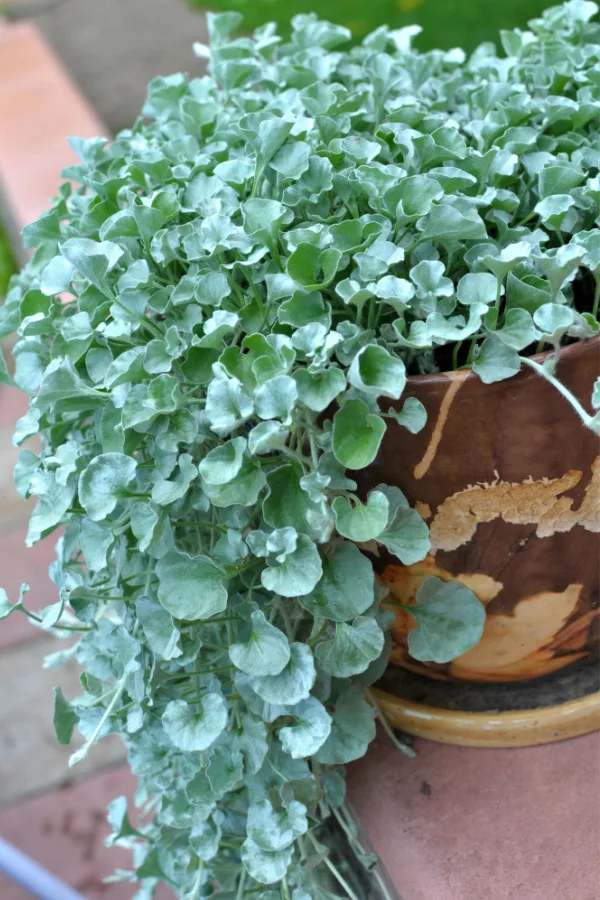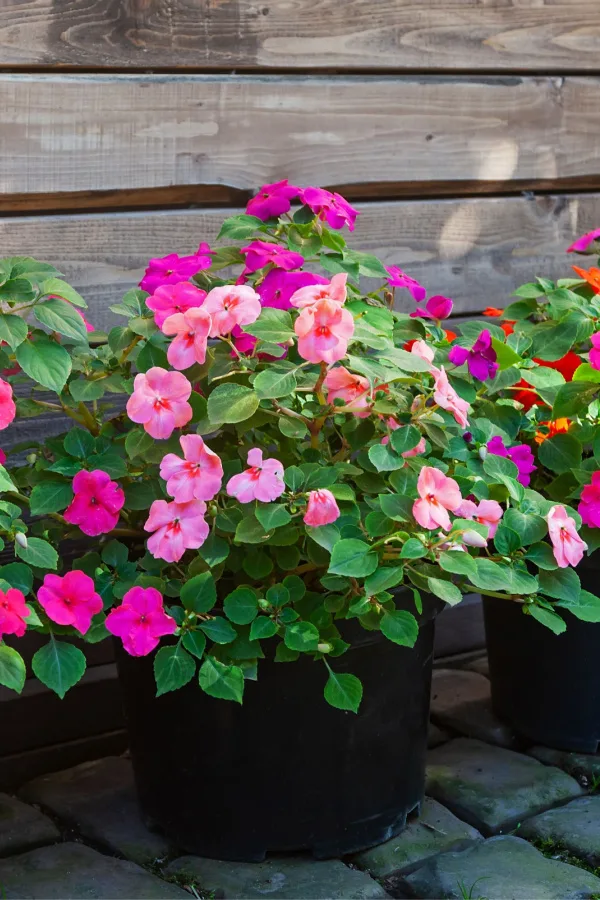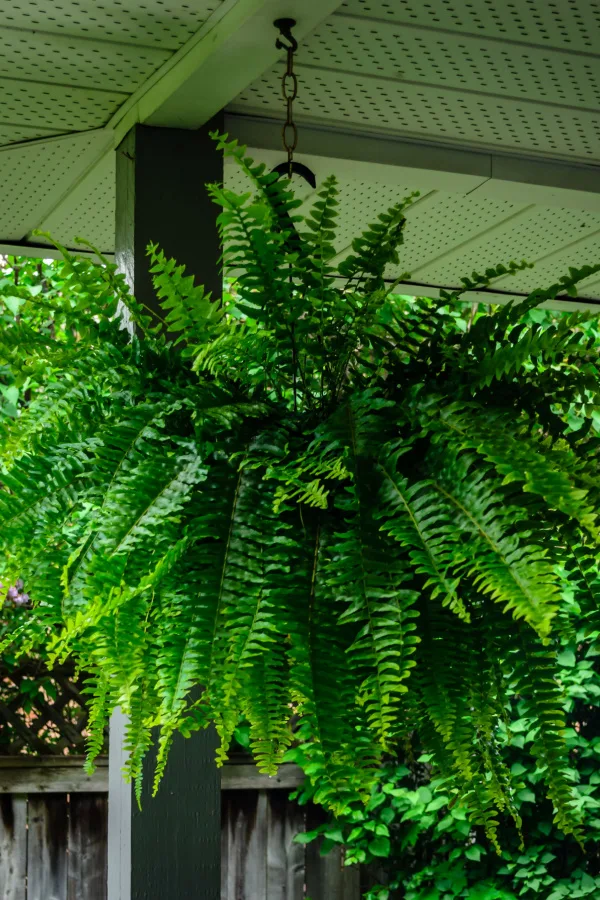Looking for some great shade loving plants for your containers and hanging baskets that don’t get to see a lot of sunlight?
There’s no doubt that growing plants in containers and hanging baskets is a great way to enjoy gardening in locations where you normally can’t. But if you happen to have a shaded front porch, back deck, or a tree covered area of your yard, finding plants to grow in containers can de difficult.
Unfortunately, many of the most colorful and common hanging basket plants need at least six plus hours of direct sunlight to thrive. But just because many of the usual plant choices won’t work – that doesn’t mean you can’t add big interest to areas with less light!

Today’s article is all about finding attractive plants that thrive in low light conditions, and that just happen to grow incredibly well in containers and hanging baskets too. What’s more, all three choices today don’t require a lot of maintenance, making them even better for keeping your shady space alive without a lot of hassle.
With that in mind, here is a look at the 3 best shade loving plants to grow in baskets, pots & containers!
The 3 Best Shade Loving Plants For Hanging Baskets & Containers
Silver Falls Dichondra – Shade-Loving Plants for Containers & Hanging Baskets
Although not a common plant you see or hear about every day, dichondra is actually a great option for hanging baskets and containers in shadier locations around the home.
This plant is typically used as a ground cover and sometimes even used as a lawn substitute – but does it ever create an awesome container plant! This is especially true for one of the prettiest varieties, Silver Falls Dichondra! Affiliate Seed Link: Silver Falls Dichondra Seeds

Dichondra features tight clusters of circular leaves in green-silver colors. When grown in containers and baskets, dichondra trails up and over the edges. It make for a beautiful spilling effect that can add huge interest to all kinds of plantings.
While dichondra does flower during the summer months, their blooms are tiny and fairly insignificant. But it’s their showy foliage that steals the show, especially as it cascades down over the edges of its container. And it can spill a long way. In fact, with a full season’s growth, it can often grow 3 feet down or more!
Caring For Dichondra – Shade-Loving Plants for Containers & Hanging Baskets
You can easily grow dichondra from seed or propagate it by using stem pieces with the roots attached. Use a well-draining potting soil and be sure to use a container with proper drainage. Wait until the temperatures stay above 50ºF before planting dichondra seeds.
Dichondra plants are actually fairly drought-tolerant. In fact, having waterlogged plants is more of an issue than having plants dry out. Water when the top inch of the soil feels dry to the touch. In warm settings, it is likely in a container they will need to be watered daily.

One added plus with growing dichondra is that there is little need for fertilizing. In fact, they can thrive in locations with poor soil conditions and without a lot of additional nutrients with ease.
You can add compost to your potting soil mixture when you sow seeds, but the nutrients in the potting mixture is usually enough to keep dichondra growing well all season long.
Impatiens – Shade-Loving Plants for Containers & Hanging Baskets
If you are looking to add a bigger splash of color to your low light areas, impatiens are the answer! Shade-loving plants are often heavy on foliage and light on flowers, but that isn’t the case with impatiens. This strong blooming annual can flower with little to no direct sunlight.
These plants are perfect for hanging baskets and containers when you are looking for non-stop blooming. In fact, impatiens will bloom from spring all the way through fall with proper watering and fertilizing.
The good news is, you have lots of choices for color and style with impatiens. There are actually over a thousand different varieties of impatiens on the market. They feature small, delicate blooms in vibrant red, orange, pink, purple, yellow, and white colors.
Caring For Impatiens – Shade-Loving Plants for Containers & Hanging Baskets
Choose a potting soil mixture that is well-draining and a container with plenty of drainage holes. Add in plenty of compost to the mix to help your impatiens continue blooming and growing throughout the season.

You will typically need to water potted impatiens daily, especially in temperatures above 85º Fahrenheit (F). Check the soil frequently. Don’t be surprised if you need to water twice a day in cases of extreme heat. However, avoid allowing plants to become overly saturated for long periods of time.
Fertilize impatiens every few weeks with an all-purpose liquid fertilizer throughout the blooming season. You can also use compost tea or worm casting tea as an excellent, all-natural alternative. To help the plant continually produce more blooms, be sure to deadhead spent blooms. Although it isn’t required with impatiens, it certainly helps them re-flower with more gusto.
Boston Ferns – Shade-Loving Plants for Containers & Hanging Baskets
No article on shade loving plants would be complete without mentioning the Boston Fern. In fact, the iconic Boston Fern is one of the best shade-loving container plants of all!
Boston ferns feature multiple sword-like stems that branch out from a central location. This classic plant is perfect for adding big greenery, whether cascading over a hanging basket, or simply filling out a large container.
With their tiny blue-green leaflets, they add a lot of texture and appeal wherever they grow. You can typically start to see Boston ferns pop up in garden centers and big box stores as soon as spring rolls around.

Quite often, it is best to repot the ferns as soon as you bring them home. More than not, the roots of store bought ferns are already crammed, and repotting can give them a better chance to flourish longer and deeper into the season.
Caring For Boston Ferns – Shade-Loving Plants for Containers & Hanging Baskets
Boston ferns are tropical plants that thrive in warm, humid locations. They grow best in temperatures between 65 and 80º F and appreciate a little misting from time to time. This helps to increase the humidity levels around them and mimic tropical climates.
In addition to misting, aim to keep their soil moist but not overly saturated. You will need to water your ferns every couple of days during the growing season and more often during overly hot spells. Boston ferns are not big feeders of the soil, so fertilizing is usually not required to keep plants in top shape.
Here is to adding some shade-loving plants to your property this year!
Follow Our Facebook Page For Even More Great Tips! Simple Garden Life Facebook Page
Simple Garden Life is a website dedicated to keeping gardening fun, simple and enjoyable! We publish two new articles each week along with a new garden podcast episode every two weeks. This article may contain affiliate links.
